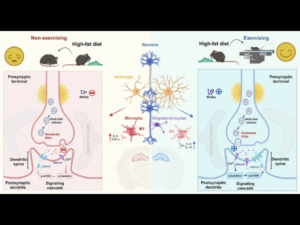Climbing stairs is associated with a longer life, according to research presented today at ESC Preventive Cardiology 2024, a scientific congress of the European Society of Cardiology (ESC).1
“If you have the choice of taking the stairs or the lift, go for the stairs as it will help your heart,” said study author Dr. Sophie Paddock of the University of East Anglia and Norfolk and Norwich University Hospital Foundation Trust, Norwich, UK. “Even brief bursts of physical activity have beneficial health impacts, and short bouts of stair climbing should be an achievable target to integrate into daily routines.”
Cardiovascular disease is largely preventable2 through actions like exercise.
However, more than one in four adults worldwide do not meet recommended levels of physical activity.3 Stair climbing is a practical and easily accessible form of physical activity which is often overlooked.
This study investigated whether climbing stairs, as a form of physical activity, could play a role in reducing the risks of cardiovascular disease and premature death.
The authors collected the best available evidence on the topic and conducted a meta-analysis.
Studies were included regardless of the number of flights of stairs and the speed of climbing.
There were nine studies with 480,479 participants in the final analysis.
The study population included both healthy participants and those with a previous history of heart attack or peripheral arterial disease.
Ages ranged from 35 to 84 years old and 53% of participants were women.
Compared with not climbing stairs, stair climbing was associated with a 24% reduced risk of dying from any cause4 and a 39% lower likelihood of dying from cardiovascular disease.5 Stair climbing was also linked with a reduced risk of cardiovascular disease including heart attack, heart failure and stroke.
Dr. Paddock said: “Based on these results, we would encourage people to incorporate stair climbing into their day-to-day lives. Our study suggested that the more stairs climbed, the greater the benefits — but this needs to be confirmed. So, whether at work, home, or elsewhere, take the stairs.”
1The abstract ‘Evaluating the cardiovascular benefits of stair climbing: a systematic review and meta-analysis’ will be presented during the session ‘Optimal exercise modalities for primary and secondary prevention’ which takes place on 26 April 2024 at Moderated ePosters 1.
2Timmis A, Vardas P, Townsend N, et al. European Society of Cardiology: cardiovascular disease statistics 2021.
Eur Heart J. 2022;43:716-799.
3World Health Organization: Physical activity.
4Relative risk 0.76, 95% confidence interval 0.62-0.94, p=0.01.
5Relative risk 0.61, 95% confidence interval 0.48-0.79, p=0.0002


